These days, you can go to just about any grocery store and grab an avocado from South America, fresh mozzarella from Italy, or fish from Japan. The ease of global travel has made the world smaller, which isn’t always for the best. Sometimes we forget the origin stories of these farwaway foods. That’s why I lit out for Japan. I wanted to follow a fish from the other side of the Pacific, to a plate at one of the buzziest underground supper clubs in LA.
So, let’s start where the fish does. Specifically, the kinmedai, a bright red fish with giant golden eyes that ranges in size from 12-18.” I went to Katsuura, a small port town in the Chiba prefecture of Japan to find them.
The town itself is a little over an hour train ride from Tokyo, past Disneyland and deep into the verdant rural land right at the Pacific’s edge. It has dramatic green hills that crash into the crystal clear waters of the port. Once I arrive, I’m met by a framed taxidermied fish in the train station. Billboard ads for charter boats to catch them are everywhere. They’re on murals, menus, the kinmedai is like the patron saint of Katsuura.
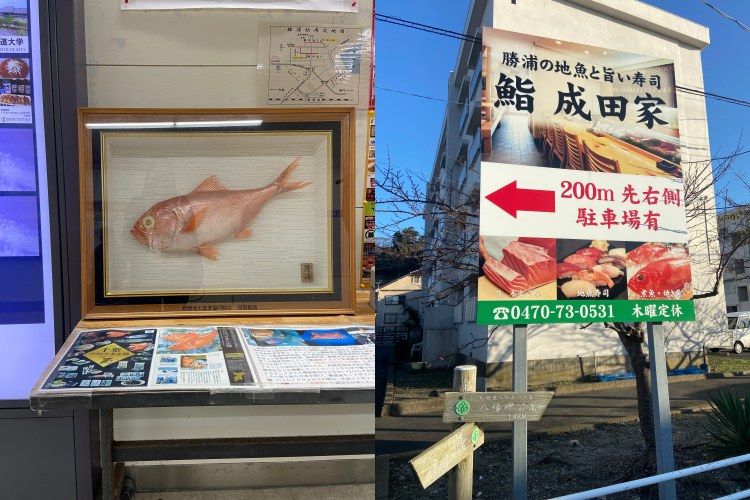
The kinmedai is impossible to miss in Katsuura. Photo by Giuliana Mayo.
So I head to the port as the fishermen are bringing in their hauls and boxing them up for the day. I tried to scam my way onto a boat, but got a line about Japanese custom not allowing women onboard. So, I watched from the dock as they loaded pallets upon pallets of fish up to send off to auctions and even to restaurants that night.
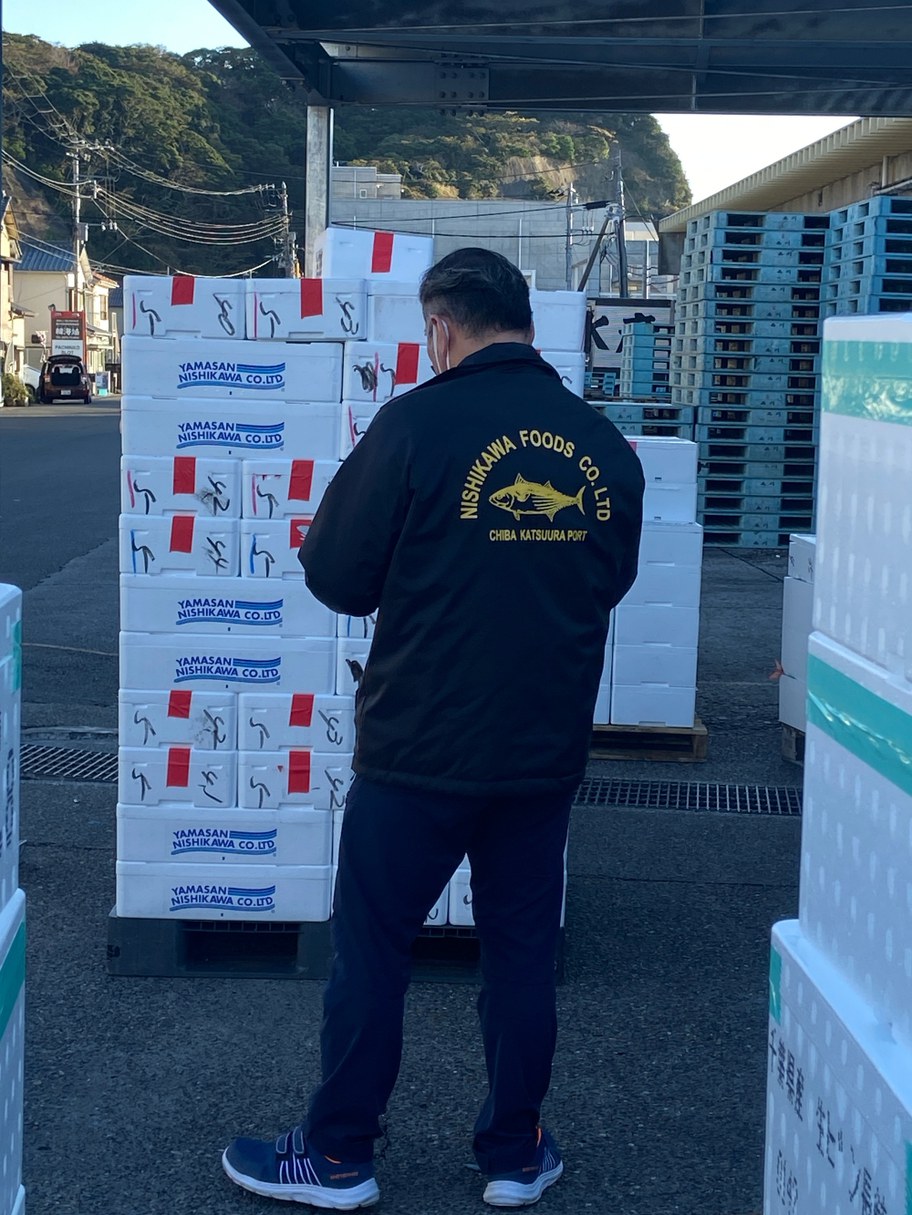
Boxes and boxes of kinmedai just before they ride the rails into Tokyo. Photo by Giuliana Mayo.
Once the pallets are on their way, by train or by truck, the fishermen hit the dock and start fishing for their dinner, mackerel, as the sun sets. It feels like just about any fishing town I’ve ever been to — people gathering after work, drinking beer and shooting the shit, casting out lines as birds circle above hoping to snag a bite. But I have to leave and hop on the train back to Tokyo with some of the fish destined for sushi bars.
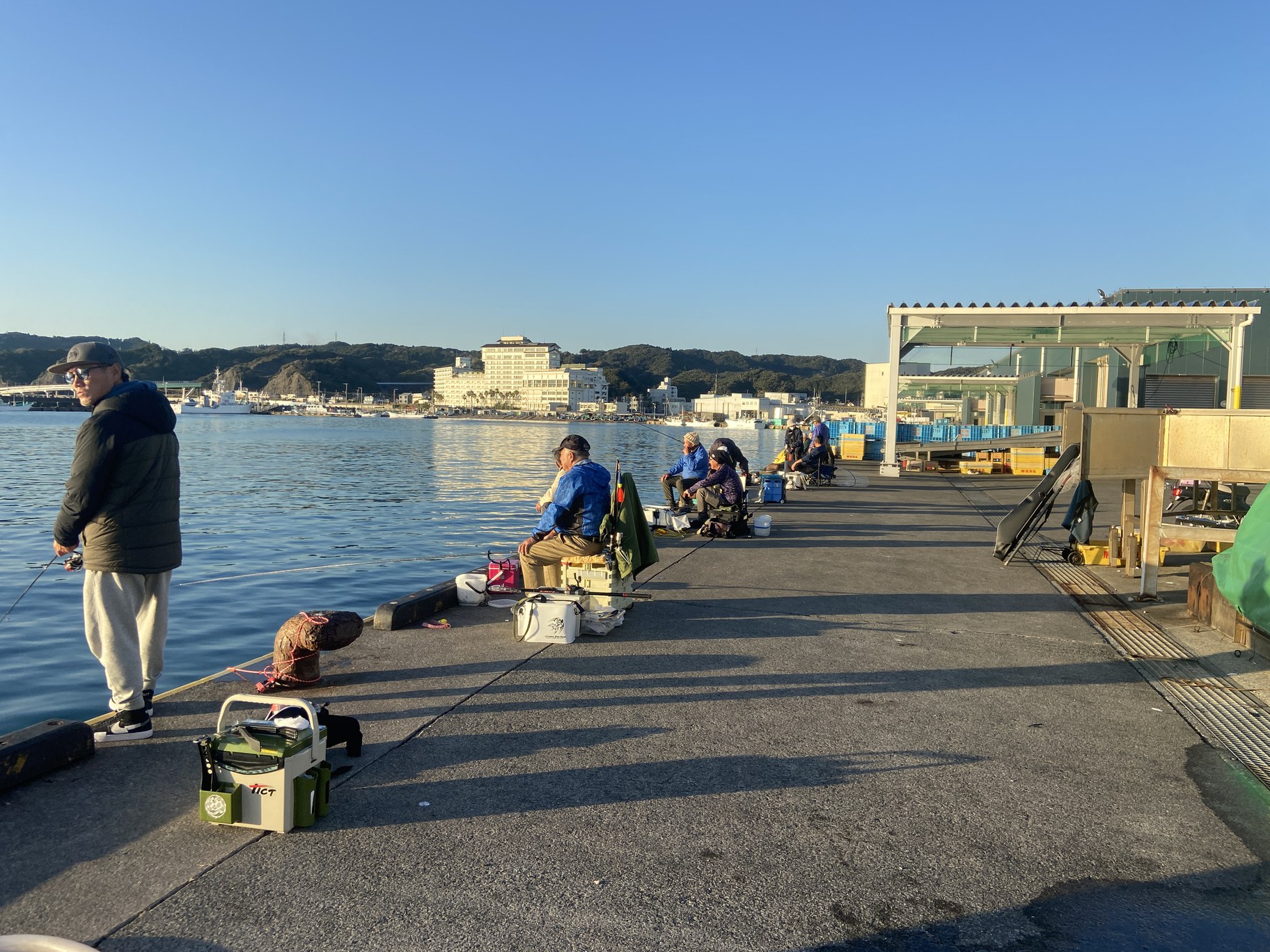
Fishermen line up on Katsuura’s dock after a long day to catch mackerel. Photo by Giuliana Mayo.
Once the fish hit Tokyo, they head to market where they are bought at auction, then shipped throughout the country and the world. I met up with Junki Emori, who exports the kinmedai to LA, after the morning’s auction to talk about this stop on their journey. He explained (through an interpreter, Rika Takeuchi) the journey of the fish so far: “It takes about one day to come into Tokyo. It's delivered to the market and then it is delivered to each individual wholesaler. After that they processed the fish they take out the guts and everything so that takes like like a half day or so. And that's after that. It's in the store.”
Taking the guts out keeps the fish fresh on its journey so it lasts longer, which is very important to Toshi, this man loves fish. He’s been in the business for over eight years, waking up before dawn to make sure his customers get the freshest fish possible.
We went to the freezing cold warehouse where the fish are then packed and readied for the next step in their journey to head to Haneda Airport, then off to LAX.
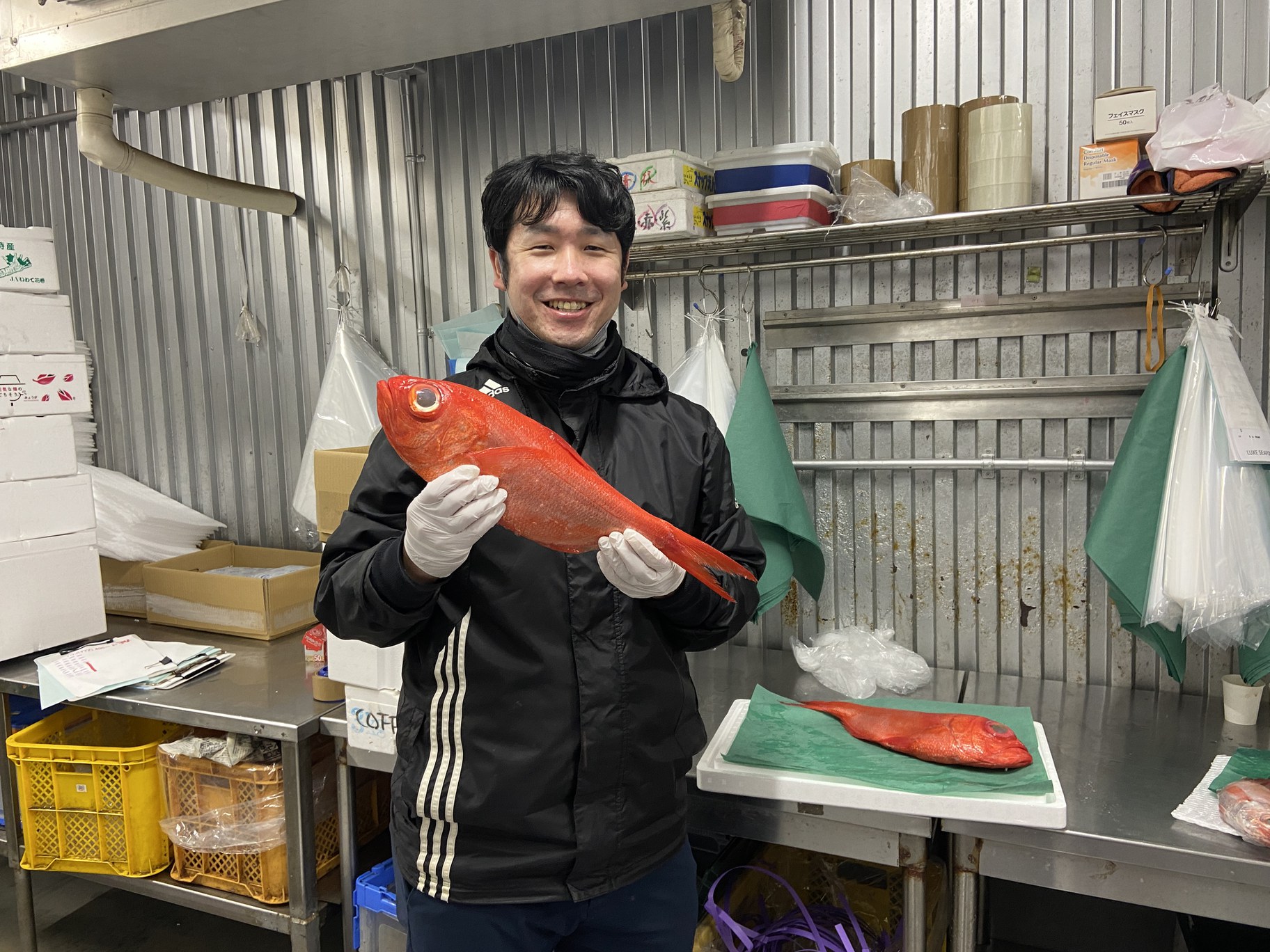
Junki Emori shows off a freshly cleaned kinmedai before it hops a plane from Haneda to LAX. Photo by Giuliana Mayo.
Once the fish arrive at LAX, an importer named Kawai Toshi picks them up and brings them to another freezing warehouse, that of Luxe Seafood in downtown LA and lets local chefs and restaurants know it’s time to grab their orders. “By the time it’s on restaurant tables, it should be about 60 to 72 hours,” Toshi notes with pride.
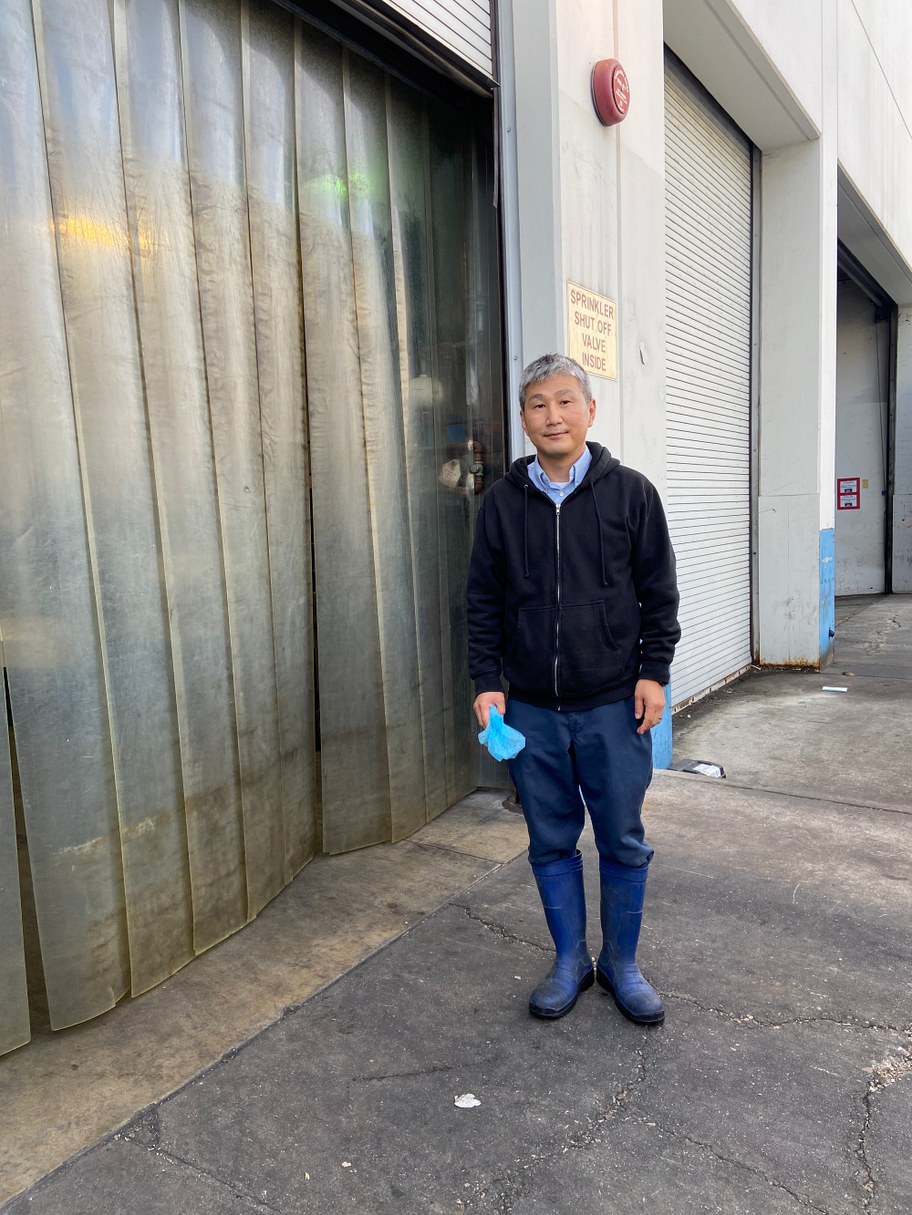
Kawai Toshi outside Luxe Seafood in downtown LA. He has been importing seafood for decades. Photo by Giuliana Mayo.
At this point, the kinmedai changes names and is given the rather fancy english name: splendid alfonsino. But by the time it hits the plate, that will have changed again to the simple, bream.
And at last – it’s time to eat. The fish has made it from the waters off Japan to one of LA’s most exclusive underground supper clubs: Wolvesmouth in East Hollywood. It’s a small wooden house with a large communal dining table that seats 22 and an open kitchen manned by three very busy people.
I’ve known Craig Thornton, the chef at Wolvesmouth, for a long time, a deadbeat ex of mine worked for him many moons ago and we’ve stayed in touch here and there since the breakup. He’s the one who pointed me to kinmedai in the first place. It’s a house favorite.
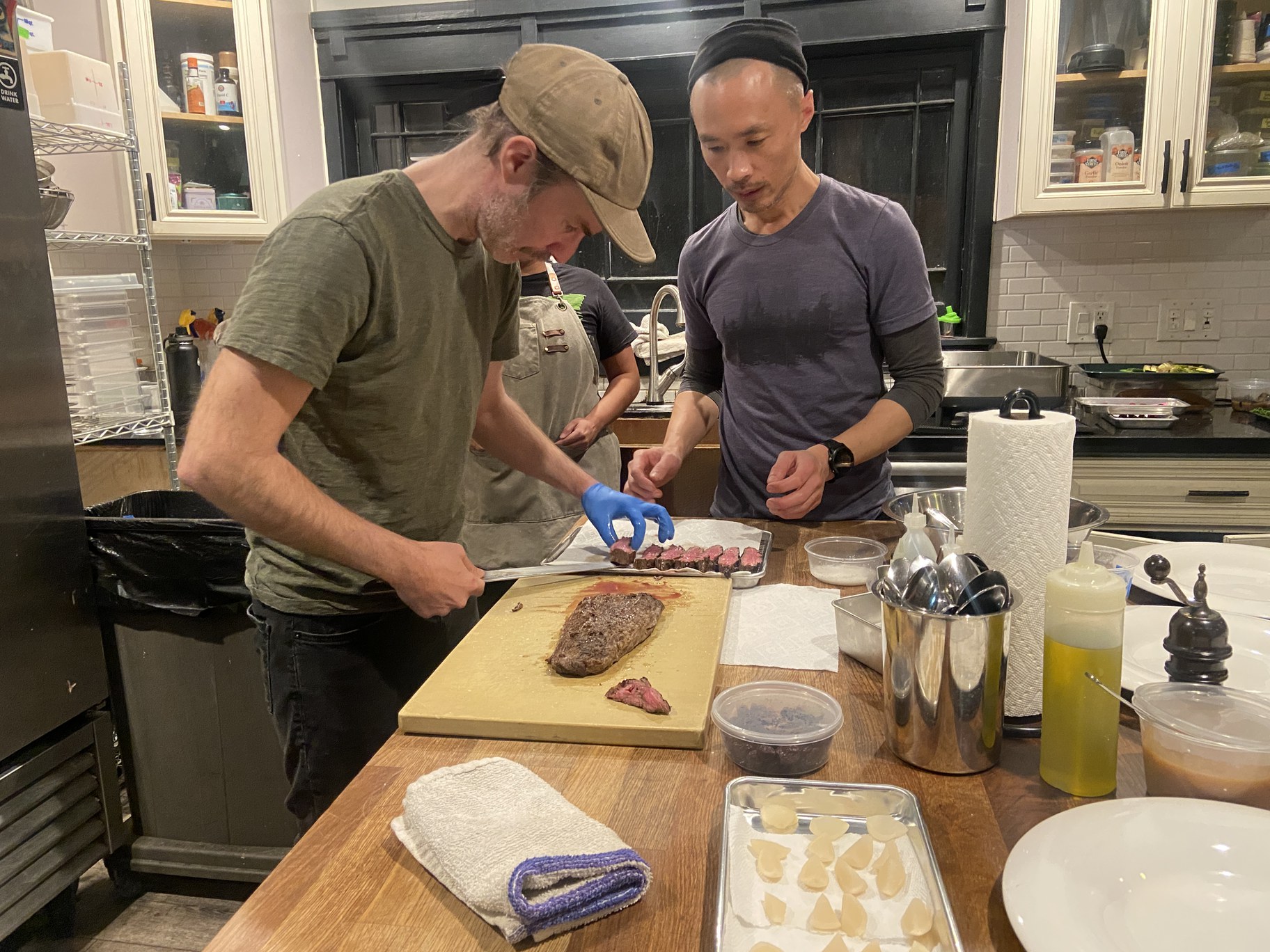
Chef Craig Thornton and Caleb Chen at work on one of the six courses in the night’s menu in Wolvesmouth’s open plan kitchen. Photo by Giuliana Mayo.
His approach to cooking this fish is involved, as are most at Wolvesmouth. But the gist of it is he loves this fish as much as everyone else who handled it along the way and wants to do it justice on the plate. “The goal with the whole dish,” Thornton explains, “is just trying to think of ways - whether it's seafood or meat or anything else- thinking of different ways that we can extend the amount of different dishes that we can create out of this rather than just saying: ‘Oh, we're gonna pick the best part, or what's perceived as the best part, and toss the rest.’”
As the kinmedai, now bream, is plated, he explains to the 22 hungry people who have paid $185 for a spot at the table and waited months for a reservation what they’re about to eat: “Here you go, we have steamed bream, shiso oil, a bream and sake broth, some daikon and Asian pear oroshi and then a fritter that we made out of the bream belly with a little bit of pickled ginger, and a shiso tartar sauce, topped with a little bit of freeze dried scallion.”
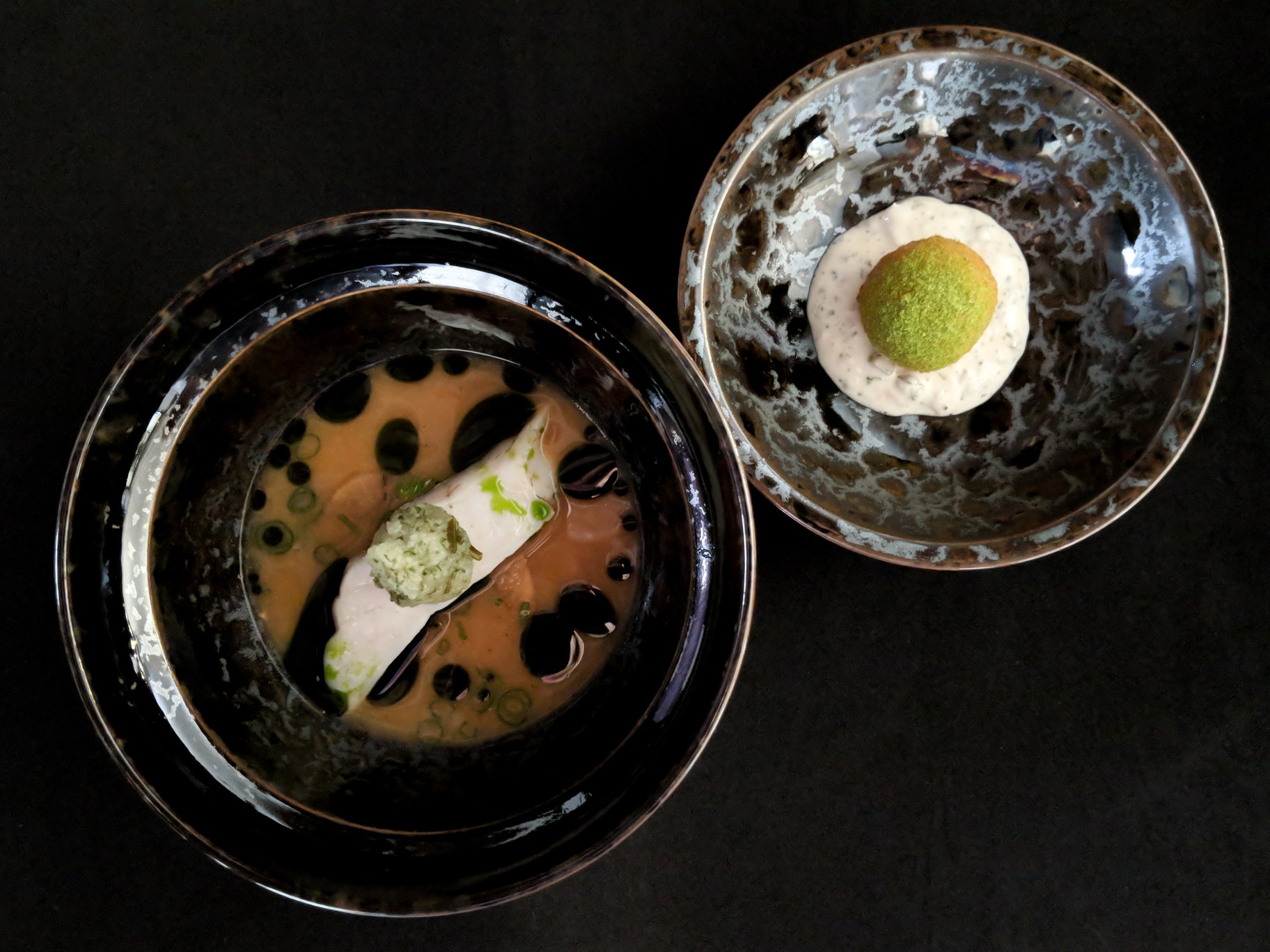
kinmedai/splendid alfonsino/bream after it’s been plated by chef Craig Thornton at Wolvesmouth. The final stop on its journey. Photo by Caleb Chen.
This fish has traveled 5,466 to make its (east) Hollywood debut and it is nothing short of dazzling.
Dear reader, I’m here to tell you, it was delicious too.
